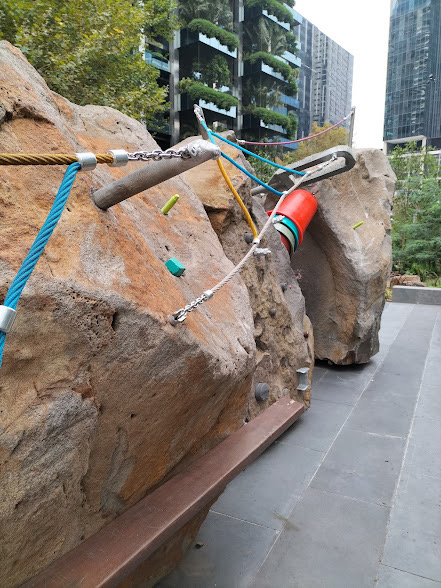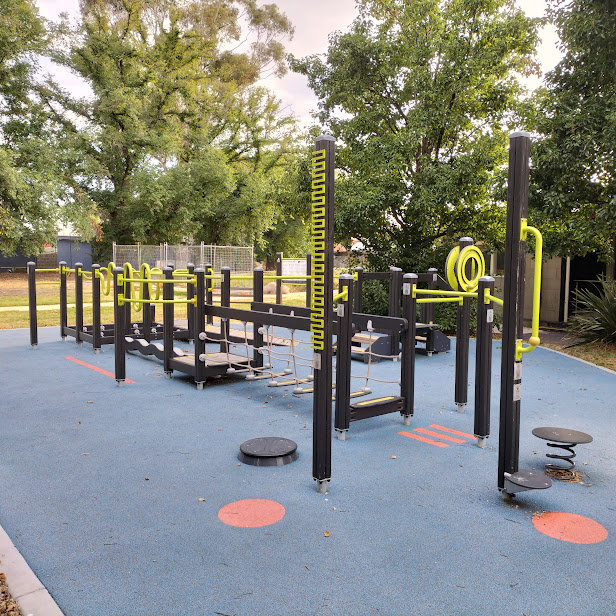As I sat in the swing at Cambridge Park in Collingwood, making notes for a previous blog post, I never would have imagined it would be controversial. I sat in the swing because it was lunchtime, and there was nowhere else to sit in the small inner city park. It was also pleasant to swing gently back and forth; like a rocking chair or cradle, it is suitable for all ages. This post is about playgrounds, play, and relaxation and who is entitled to enjoy them. It is about playing in the urban environment; how is play designed for, and who is excluded?
Public playgrounds, like public seating, are adjacent to public sculptures, as public sculptures are frequently used for one or both. Skateboard riders use Petrus Spronk’s Architectural Fragment. When I was a child, I climbed to the top of Peter Corlett’s Tarax Play Sculpture (for health and safety reasons, children aren’t allowed to do that now). Recently, I saw and climbed on Mike Hewson’s dangerous-looking sculpture/playground in Southbank.
Hewson’s playground, with its improvised and scattered appearance, looks like so many contemporary art exhibitions. It was also the least prescriptive of playgrounds; you have to work out if you want to use it rather than follow the dictates of a path. It was also less dangerous than it appeared; what looked like Southbank’s typical granite pavers were actually soft and rubbery. (Read Sanné Mestrom, Senior Lecturer, DECRA Fellow, Sydney College of the Arts, University of Sydney, on “This new ‘risky’ playground is a work of art – and a place for kids to escape their mollycoddling parents”)
The Cambridge Park controversy was that the swing wasn’t a playground for just for little children. Now, the council is holding public consultations about options for adding traditional children’s playground equipment. I would have been unlikely to have sat in the swing if it was next to a four-way rocker or other children’s play equipment, for in our culture, children’s playgrounds exclude older single males and females.
“Will no one think of the children?!”
The online discourse about Cambridge Park exposes many prejudices, including those about who is allowed to play, what children need to play, and who can safely associate with children. These prejudices also affect the politics of public space. Considering demographic equality of access and declining birthrates, is the large amount of space dedicated to children’s playgrounds, particularly in small inner-city parks, currently justified?
There are anti-fun ideas in our culture that only permit children to play as part of a developmental aid to be cut off at a certain age. Should play be restricted to age? Why are they not given room to disport themselves? Should older children and adults only be allowed to exercise and play organised sports and games?
Thinking about the playgrounds in my area, little kids use public gym equipment as frequently as adults do. Next to the Coburg Senior Citizens Centre, there is exercise equipment for seniors, but it looks like a playground, only safer. I have previously written a blog post about the Wilson Avenue Urban Bouldering and noted how little kids found their own use for this adult play equipment.
They might be safe, controlled, and tested, but do playgrounds help kids’ culture, and are they more fun than a cardboard box or a ball?





What are your thoughts?